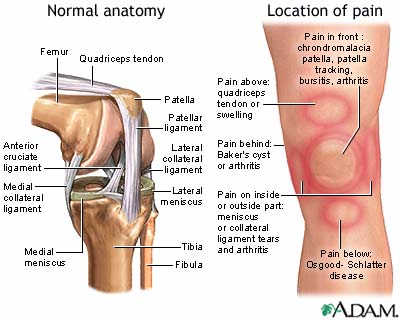The human body is a complex and remarkable machine, composed of various systems and structures that work together in perfect harmony. Among these intricate components is the largest joint in the human body, which plays a crucial role in our mobility and ability to perform daily activities.
In this article, we will delve into the fascinating world of joints and shed light on the largest joint in the human body, as reported by The New York Times.

Understanding Joints
Joints are the points where bones come together, allowing movement, flexibility, and support within the body. They act as connectors, providing stability and enabling the smooth articulation of bones during activities such as walking, running, and lifting. The human body consists of several joints, varying in size and function.
The Largest Joint: The Knee Joint
According to The New York Times, the knee joint holds the distinction of being the largest joint in the human body. It is a hinge joint that connects the thigh bone (femur) to the shin bone (tibia) and the smaller bone on the outside of the leg (fibula). The knee joint is responsible for supporting the body’s weight, absorbing shocks, and facilitating various movements.
The knee joint consists of several components that work together seamlessly. These include bones, cartilage, ligaments, tendons, and synovial fluid. The articulation between the femur and tibia is cushioned by two pieces of C-shaped cartilage called menisci, which provide stability and help distribute forces evenly throughout the joint.
Importance of the Knee Joint
The knee joint is of paramount importance due to its role in daily activities and overall mobility. It allows us to walk, run, jump, climb stairs, and perform countless other movements. The knee joint also contributes to maintaining balance and stability, particularly during activities that involve rapid changes in direction or weight-bearing.
Moreover, the knee joint acts as a shock absorber, reducing impact forces that would otherwise be directed to other parts of our body. For athletes and individuals involved in high-impact sports, the knee joint plays a crucial role in their performance and injury prevention.

Common Knee Joint Issues
Given the significance of the knee joint, it is not surprising that it is prone to various issues and injuries. Some common knee joint problems include:
1. Osteoarthritis:
Osteoarthritis, often attributed to wear and tear, is a degenerative condition that affects the cartilage within the knee joint. It can cause pain, stiffness, and reduced mobility.
2. Ligament Injuries:
The knee joint is supported by various ligaments, including the anterior cruciate ligament (ACL) and medial collateral ligament (MCL). Injuries to these ligaments, such as sprains or tears, can result in instability and compromised function.
3. Meniscus Tears:
The menisci, the cartilage discs within the knee joint, can become torn due to sudden twists or repetitive stress. Meniscus tears can cause pain, swelling, and difficulty in moving the knee.
4. Patellofemoral Pain Syndrome:
This condition, also known as runner’s knee, is characterized by pain behind or around the kneecap. It is often caused by overuse, muscle imbalances, or problems with the alignment of the kneecap.

Caring for the Knee Joint
To maintain a healthy knee joint and reduce the risk of injuries, it is essential to adopt certain preventive measures and lifestyle habits. These include:
1. Regular Exercise:
Engaging in low-impact exercises that strengthen the muscles around the knee can help provide support and stability. These exercises include swimming, cycling, and gentle strength training.
2. Maintaining a Healthy Weight:
Excess weight can put added stress on the knee joint, increasing the risk of wear and tear. Maintaining a healthy weight can help reduce pressure on the knees and prevent unnecessary strain.
3. Using Proper Technique and Protective Gear:
Whether it’s during sports activities or daily tasks, using proper technique and protective gear, such as knee pads, can help prevent injuries and minimize strain on the knee joint.
4. Rest and Recovery:
Giving the knee joint ample rest after intense physical activities can aid in its recovery and reduce the risk of overuse injuries.
In conclusion, the largest joint in the human body, the knee joint, is a remarkable and vital structure that supports our daily activities and mobility. It is essential to care for and protect this joint to maintain optimal function and prevent injuries.
Whether we are climbing stairs, going for a jog, or simply bending down, the knee joint silently works behind the scenes, allowing us to move gracefully through life.

